The scorching temperatures and an abundance of baitfish in the water make mid-summer bass fishing difficult. However, anglers can have a productive day on the water with the correct tactics and lures.
Fishing deep is a productive method for catching bass in the middle of the summer. Bass frequently travel to deeper water as the water temperature rises in search of cooler temperatures and the comfort of cover. Look for structures that give bass cover to ambush their prey, such as drop-offs, ledges, and submerged humps. It can be effective to jig and drag baits around the bottom to get a bite.
Targeting vegetation is another strategy for bass fishing in the middle of the summer. Bass have plenty of cover as the summer goes on thanks to aquatic vegetation like lily pads and hydrilla that can grow dense. For luring strikes from bass hidden in the foliage, topwater lures like buzzbaits and frogs can be effective.
Bass fishing in the middle of summer can also be successful using soft plastic lures like worms, lizards, and creature baits. The bait can be presented naturally with Texas and Carolina rigs, and the slow retrieve can elicit strikes from sluggish bass.
Bass fishing in the middle of summer can also be productive using crankbaits and spinnerbaits. Find sites with current, such as river mouths and dams, and cast the lure upstream before retrieving it through the current. Bass may find it impossible to resist the lure’s movement in the current.
Finally, it’s critical to consider the time of day when bass fishing in the middle of the summer. Because the water is cooler and the sun is not as high in the sky, early morning and late evening might be excellent periods for bass feeding activity.
Soft Plastic Worms
One of the best baits for bass fishing in the middle of the summer is soft plastic worms. They are adaptable enough to be utilized in both deep and shallow water and may be fished using a number of techniques, such as Texas and Carolina rigs. Soft plastic worms have the benefit of being fished slowly, which makes them useful for catching lazy or stressed-out fish.
It’s crucial to select the appropriate size and color of soft plastic worms for the fishing situation. Natural hues like green or brown, as well as brighter hues like chartreuse or pink in clear water, might be useful in the middle of summer. It’s crucial to match the worm’s size to that of the fish you’re pursuing.
Using a Texas rig is one efficient method for fishing soft plastic worms in the middle of the summer. To make the worm weedless, this method entails threading it onto a hook and inserting the hook’s point into the worm’s body. The worm can then be carefully fished along the bottom while being bounced off of objects and cover to draw a strike.
Mid-summer fishing with soft plastic worms on a Carolina rig is another productive technique. By dragging the worm along the bottom with a weight, you may target deep structure and cover with a presentation that looks natural. Depending on the circumstances, the worm might be fished slowly or swiftly.
Overall, soft plastic worms are a versatile and successful bait for bass fishing in the middle of the summer. They can be used to target both shallow and deep water and can be useful for targeting both lazy and aggressive fish with the proper size, color, and rigging technique.
Jig And Pig
In the middle of summer, bass can be caught with a jig and pig. This lure resembles crawfish, a favored food of bass. The lead head jig, which has a rubber or silicone skirt, and the pork trailer make up the jig and pig. You may match the bait to the fishing conditions by choosing from a range of weights and sizes for the jig head.
It’s critical to consider the structure and cover you are fishing while using a jig and pig. During the middle of summer, bass will frequently stay close to structure, making it possible to catch fish by casting near brush piles, logs, and other types of structure. Additionally, you can jig and pig fish near weed beds, particularly if the weeds are thin enough to let the bait fall through.
Cast the jig and pig out and allow it to sink to the bottom to begin fishing. Lift the rod tip up once it reaches the bottom, then let the bait fall back down. Repeat this action while being mindful to stay in contact with the ground. A bass may strike if it imitates a crawfish crawling across the bottom by moving in this manner.
If you sense a bite, swiftly raise the rod tip to set the hook. Bass can swiftly spit out the jig and pig if the hook isn’t placed promptly and solidly, so this is crucial. Once the fish is hooked, steadily reel it in while maintaining line tension.
Overall, catching bass in the middle of the summer can be accomplished by employing a jig and pig. It is crucial to fish the bait carefully and methodically while paying close attention to the structure and cover you are fishing. By utilizing this bait consistently, you can improve your skills and catch more bass in the middle of summer.
Crankbaits
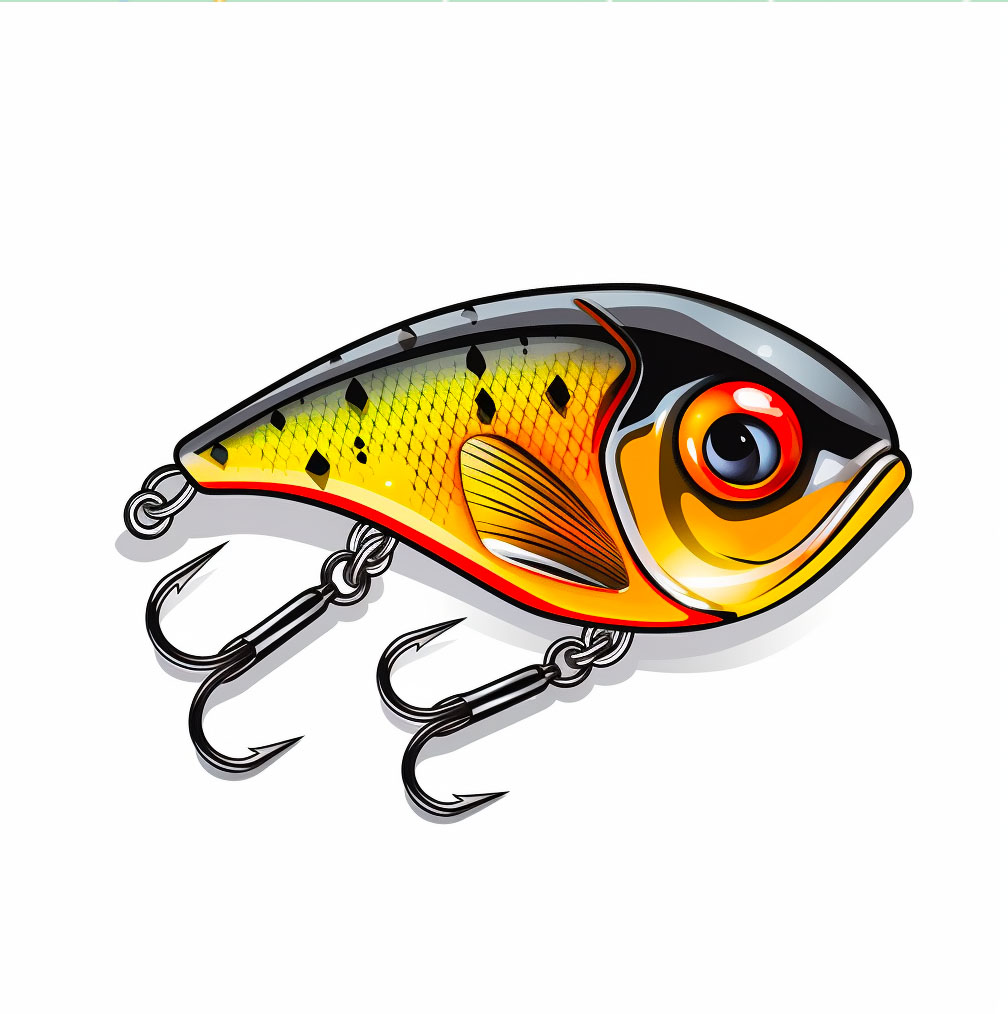
Because they mimic baitfish, which are plentiful at this time of year, crankbaits are a common choice for bass fishing in the middle of the summer. Anglers can use these lures to target particular fish species by choosing one that best matches the hatch by choosing from a variety of shapes, sizes, and colors. Depending on the model and retrieve speed, crankbaits can be utilized to fish in shallow or deep water.
An effective square bill crankbait for shallow water fishing. Due to the square form of their lips, these lures can bounce off of cover and produce an irregular motion that can elicit a bite. Depending on the fish’s mood and the water’s temperature, anglers can retrieve these lures swiftly or slowly.
Using a deep diving crankbait is advised while fishing in deeper water. These lures can dive to depths of at least 10 to 20 feet thanks to their longer, more slender bodies and broader lips. These lures can be used by fishermen to catch fish that are holding on deeper structure like drop-offs, points, and humps.
The adaptability of crankbaits makes them a good choice for bass fishing in the middle of the summer. In order to determine what the fish are biting on, anglers might experiment with various colors and retrieve rates. While brighter hues like chartreuse or firetiger may perform better in discolored water, natural hues like shad or crawfish may be useful in clean water.
It’s crucial to consider the lure’s action and retrieve speed when crankbait fishing. On some days, getting the fish to bite can be easier with a faster retrieve and a tighter wiggle, while other days might call for a slower retrieve with a wider motion. Additionally, anglers can change the speed of the retrieve by stopping the lure or jerking the rod tip to produce a more chaotic action.
Overall, crankbaits are a versatile and successful lure for bass fishing in the middle of the summer. Anglers can discover which colors and retrieve rates work best for the circumstances and the fish they are after by experimenting with various combinations of both.
Spinnerbaits
Because they work well in a range of fishing situations, spinnerbaits are a common choice for bass fishing in the middle of the summer. Because of their adaptability, they can be caught at a range of depths and speeds. A metal wire is curled into a loop and attached to a spinner blade on one end and a lead head with a hook on the other to make a spinnerbait. They come in a range of blade sizes, shapes, and colors to accommodate various fishing circumstances.
It’s critical to select the appropriate size blade for the conditions when using spinnerbaits in the middle of summer. A wider blade can improve visibility and draw in more fish in muddy water while a smaller blade may be more efficient in clear water. Depending on the situation, spinnerbaits can be retrieved fast or slowly. In clear water, a leisurely retrieve may be more successful, whereas in murky or discolored water, a rapid retrieve may be more successful.
When fishing near cover and structure, such as weed beds, stumps, and logs, spinnerbaits are effective. They can also be caught while fishing near rocks, docks, and other buildings. To avoid getting caught, it’s crucial to vary the retrieve when fishing spinnerbaits near cover. In open water, a slow and steady retrieve may be successful, whereas a stop-and-go retrieve may be more successful close to cover.
In conclusion, spinnerbaits are a versatile and effective bait for bass fishing in the middle of the summer. They work well for fishing around cover and structure since they can be used at a variety of depths and speeds. To avoid being snagged when using spinnerbaits, it’s critical to select the proper blade size for the situation and vary the retrieve.
Topwater Lures
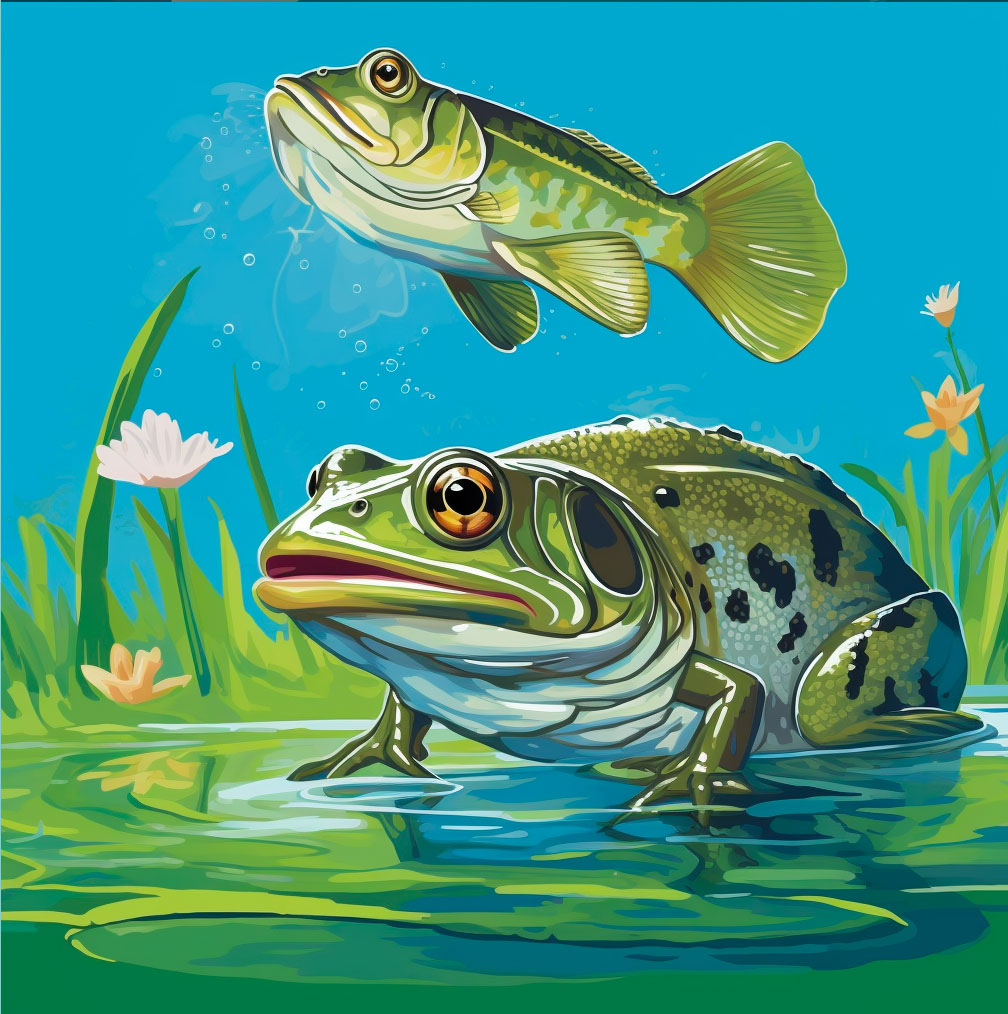
Mid-summer bass fishing with topwater lures can be tremendously thrilling and productive. Aggressive bass can make powerful strikes on topwater lures like frogs and poppers. Bass are more likely to hit at a topwater bait when the water is warmer and more active.
It’s crucial to consider the surroundings while using topwater lures to catch fish. Look for areas with foliage, structure, and cover because bass are likely to be hiding there. Cast the lure close to these places and retrieve it using different techniques, such as a steady retrieve or a stop-and-go retrieve.
Topwater lure fishing can be successful at dawn and dusk and other times of low light. Bass are more likely to be active and strike at a moving bait at these times. Additionally, because the clouds make the bait more apparent to the bass, fishing in them can be successful.
It’s crucial to exercise patience and refrain from setting the hook too quickly when employing topwater lures. Before placing the hook, wait until you can feel the fish’s weight on the line. It may take some effort, but it’s crucial to refrain from removing the bait too quickly from the fish.
Overall, using topwater lures to catch bass in the middle of the summer may be exciting and successful. Anglers can elicit powerful strikes and pull in some trophy-sized fish with the appropriate technique and approach.
Jerkbaits
Hard-bodied lures called jerkbaits are made to resemble injured baitfish. They often have a diving lip on the front of the lure and are long and slim. Although jerkbaits can be fished in a number of ways, a “jerk and pause” retrieve is the most productive. This entails quickly jerking the lure with the rod tip, halting the retrieve, and then letting the lure float in the water column.
Jerkbaits can be particularly effective in catching bass that are holding in deeper water in the middle of the summer. The lure will dart erratically through the water column when fished with a jerk and stop retrieve, simulating the movements of an injured baitfish. Bass that are holding in deeper water and may be challenging to capture using conventional lures may respond to this.
Although jerkbaits can be fished in a number of hues, natural hues like silver, gold, and shad patterns frequently produce the best results. Additionally, it’s crucial to match the lure’s size to the size of the baitfish that bass are consuming. Smaller jerkbaits in the 3 to 4 inch range may be more effective than larger lures in the middle of the summer when bass may be nibbling on smaller baitfish.
Mid-summer jerkbait fishing requires careful observation of fish behavior and water temperature. Fishing in the early morning and late evening when the water is cooler may boost your chances of catching fish because bass may be more active during these times. Additionally, you can improve your chances of discovering active fish by concentrating your search in places with structure like drop-offs, rock piles, and submerged logs.
Swimbaits
For bass fishing in the middle of the summer, swimbaits are a great option. These lures resemble baitfish, which are a favorite diet of bass, in their motion and appearance. Swimbaits can be found on the market in a range of shapes and materials, including soft plastic and hard plastic.
It’s crucial to match the swimbait’s size and color to the forage in your area when using swimbaits to catch fish. It might be important to scale back your swimbait during the middle of the summer when bass are more likely to be nibbling on smaller baitfish. Your chances of success can also be increased by using natural colors like silver, white, or bluegill.
Swimbaits work well when cast into deep water or near structures. Depending on the circumstances and the fish’s attitude, they might be retrieved slowly or swiftly. Bass may be holding in deeper water in the middle of the summer, so it’s critical to fish your swimbait at the proper depth. Your swimbait can descend to the desired depth more quickly if you add weight to it.
The water temperature and the weather should be taken into consideration while using swimbaits in the middle of summer. Fishing early in the morning or late in the evening may be more successful than fishing during the hottest portion of the day because bass may be less active during that time. Additionally, you can increase your odds of success by fishing on cloudy days or days with a light breeze.
Overall, swimbaits are a great option for bass fishing in the middle of the summer. They can be useful for pursuing larger fish, and even the pickiest bass can be won over by their lifelike appearance. Swimbaits can be used to catch some of the biggest bass of the season if you have a little bit of patience and tenacity.
Spoons
When the fish are holding in deeper water in the middle of the summer, spoons, a traditional lure for bass fishing, can be productive. These lures normally come in a range of sizes and colors and are composed of metal. They are adaptable enough to be used in both freshwater and saltwater, and they can be fished either vertically or horizontally.
Targeting areas where bass are holding in deeper water is key when spoon fishing in the middle of the summer. Drop-offs, points, ledges, and other submerged features can fall under this category. These locations can be located with the aid of a fish finder.
You can jig spoons vertically or cast and retrieve them when fishing with them. It’s crucial to experiment with different retrieve speeds and depths when casting and retrieving until you find what works best. A slow, steady retrieve is frequently beneficial, but depending on the fish’s mood, you might need to speed up or slow down.
You can drop spoons down to the proper depth and then jig them up and down when jigging them vertically. When fishing near structures or in deep water, this method may be effective. Once more, it’s critical to pay attention to the fish’s mood and modify your method as necessary.
For bass fishing in the middle of the summer, it’s crucial to use colors that complement the local forage. Brighter hues like pink or chartreuse can also work nicely, as can natural hues like silver, gold, and copper. Additionally, it’s crucial to select the proper spoon size for the circumstances. While a smaller spoon may be required to tempt picky bass, a larger spoon may be more effective when pursuing larger fish.
Overall, spoons can be a very successful bait for bass fishing in the middle of the summer. Spoons can help you target fish in deeper water and near structure whether you’re casting and retrieving them or vertically jigging them. You can use spoons to catch some of the biggest bass of the season with a little bit of practice and persistence.
Hair Jigs
Mid-summer bass fishing can be successful when using hair jigs. A style of jig known as a “hair jig” substitutes hair—typically bucktail—for the customary skirt made of plastic or rubber. The hair gives the bait a more natural motion in the water and can draw more nibbles from hesitant or picky fish.
The ability to fish hair jigs at different depths in the middle of summer is one of their advantages. A hair jig can be used to fish shallow or deep, depending on the weight of the jig head. When pursuing bass that are holding at various depths in the water column, this adaptability might be helpful.
It’s crucial to match the jig’s size and color to the forage in the body of water you’re fishing in when using hair jigs. For instance, a white or silver hair jig can work better if the lake or river has a lot of shad in it. A brown or orange hair jig could be preferable if there are more crawfish present.
There are many ways to fish using hair jigs, such as jigging, dragging, and hopping. Hopping the jig around the bottom to resemble a crawfish or baitfish is a common method. Swimming the jig through the water column to resemble a swimming baitfish is another successful method.
Overall, hair jigs can be a terrific addition to your bass fishing equipment for the middle of the summer. They can assist you in catching more fish and luring more bites from picky bass because to their natural motion and adaptability.
Drops shots
Midsummer bass fishing can be successful when done with drop shot setups. In the finesse method known as drop shotting, a soft plastic bait is suspended above a weight on a leader. The method can be utilized to catch bass that are suspended in the water column or holding in deeper water.
One advantage of utilizing a drop shot rig in the middle of summer is that it can be used to fish at different depths. Bass may go to deeper water in the summer to find cooler temperatures. Drop shotting can be a useful technique for pursuing these fish. You can locate the depth where the bass are holding by adjusting the leader length to fish at various depths.
It’s crucial to find a soft plastic bait that corresponds to the forage in the body of water you’re fishing when choosing one for a drop shot rig. Worms, minnows, and creature baits are frequently used as drop shot baits. To avoid becoming tangled up in weeds or structure, the bait can be wired weedless.
It’s crucial to watch the line closely while fishing using a drop shot setup for any changes or movement. When a bite occurs on a drop shot rig, it frequently feels like a twitch or little pressure on the line. When you sense a bite, tighten the line by drawing up on the rod to set the hook.
Overall, drop shot rigs can be a terrific addition to your bass fishing equipment for the middle of the summer. They can assist you in pursuing bass that are holding in deeper water or suspended in the water column because of their dexterous presentation and adaptability.
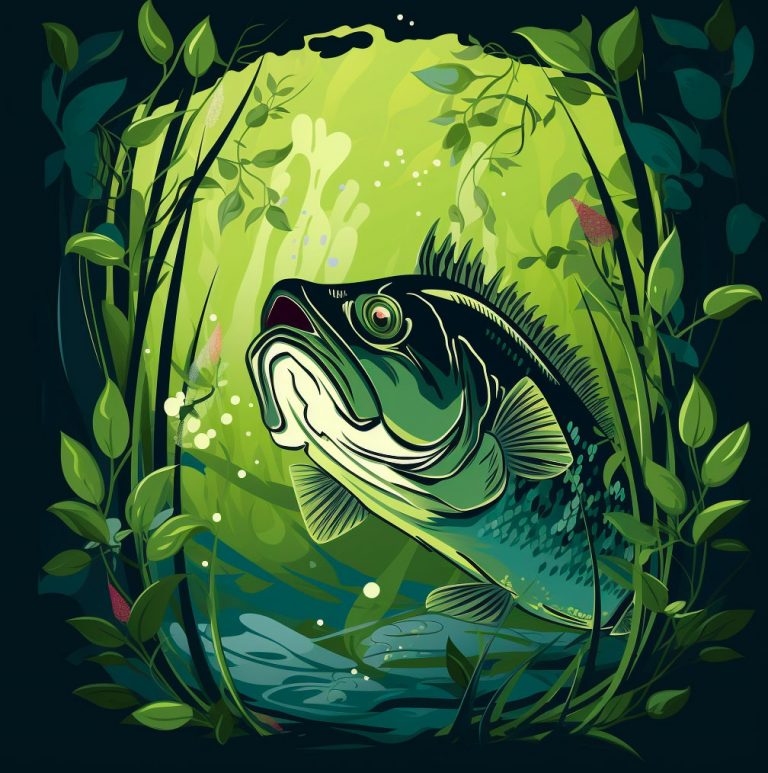
Why bass are harder to catch in the summer
Fishing enthusiasts know that bass fishing in the summertime can be challenging. The clear sunny skies, warm weather, and lack of rain and wind make it difficult to catch bass. Many anglers have experienced blank days in the summer, wondering why bass no longer seem to be interested in their baits that they easily caught […]
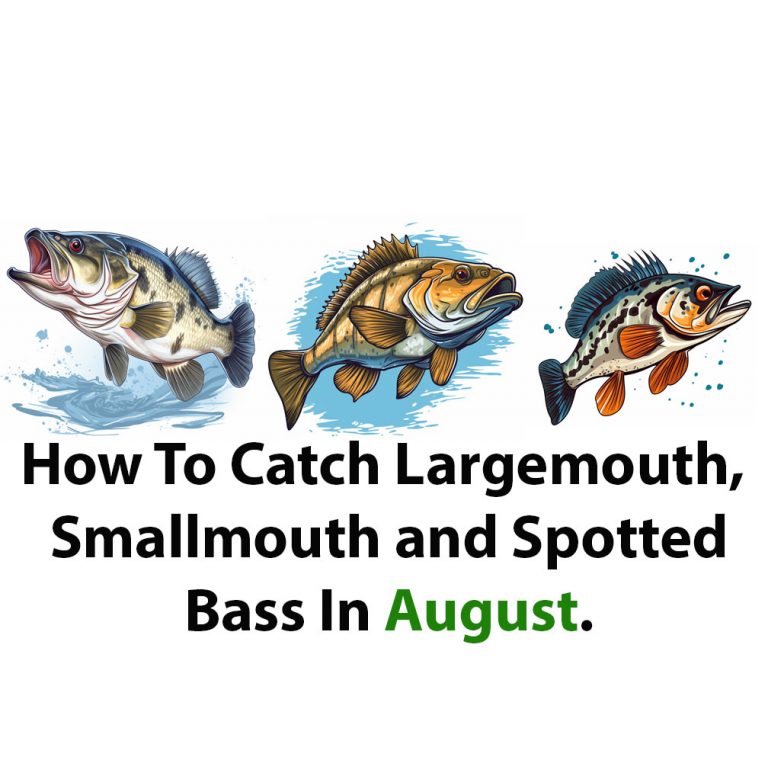
How To Catch Bass In August
Introduction I get a kick every time I step into the water since I’m an experienced bass fisherman. And as August approaches, that sensation only intensifies. The water is warm, the temperatures are high, but most importantly, the fish are biting. But as any angler is aware, casting a line and waiting for a pull […]
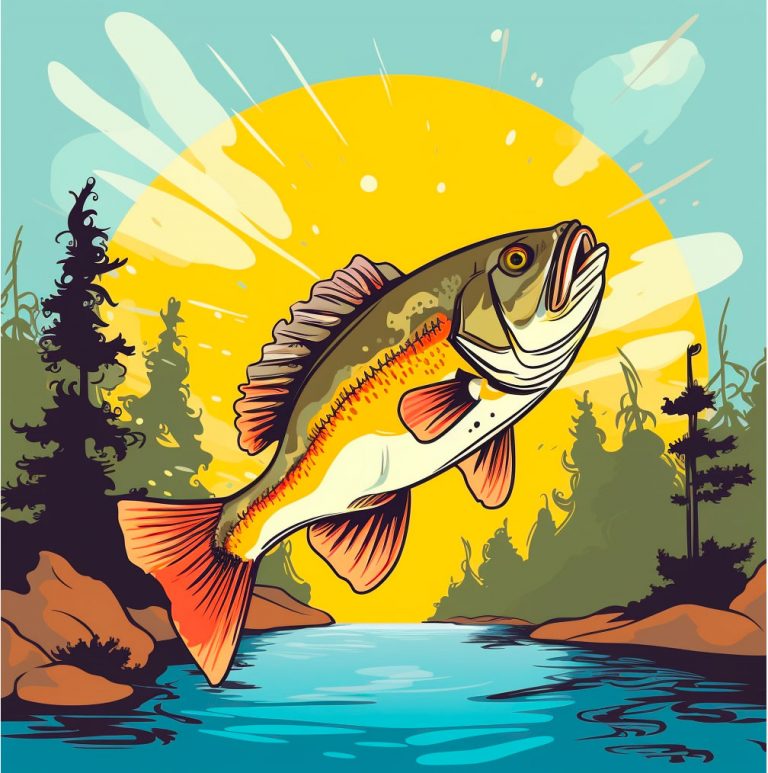
Summer Bass Fishing: Find Bass Fast
Introduction: Summer is a great time to hit the water for some bass fishing. As the water temperatures rise, the bass become more active and their feeding patterns change. However as you enter the dog days of summer the fish can all but seem to disappear at certain times. We’re going to show you how […]
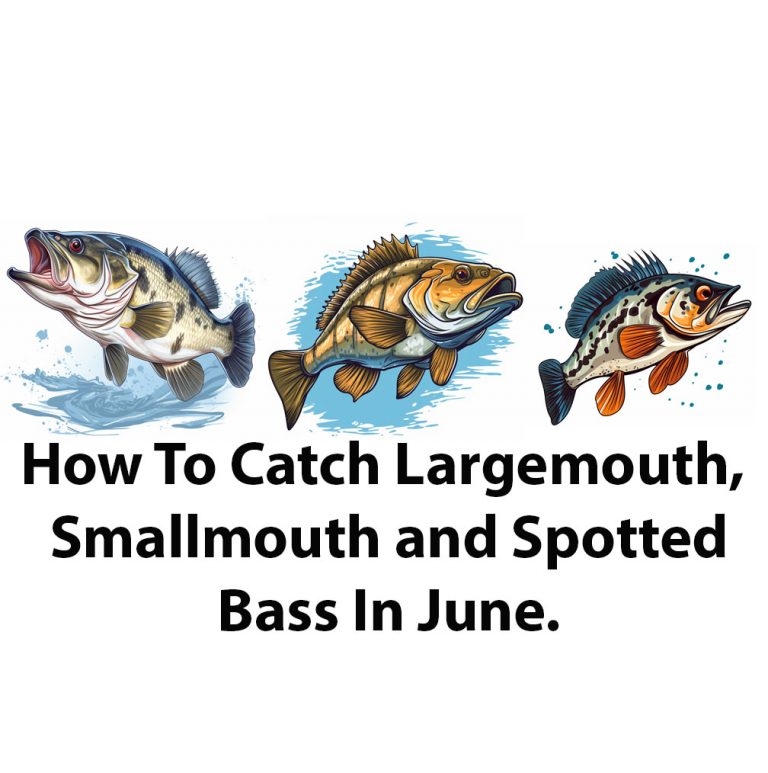
How To Catch Bass In June
Introduction Here is a guide I wrote for June fishing for largemouth, smallmouth, and spotted bass. Although June is a good month for catching these three varieties of bass, doing so might be difficult, especially if you don’t know their preferences and behaviors. Each species of bass has its own distinct characteristics, and from my […]
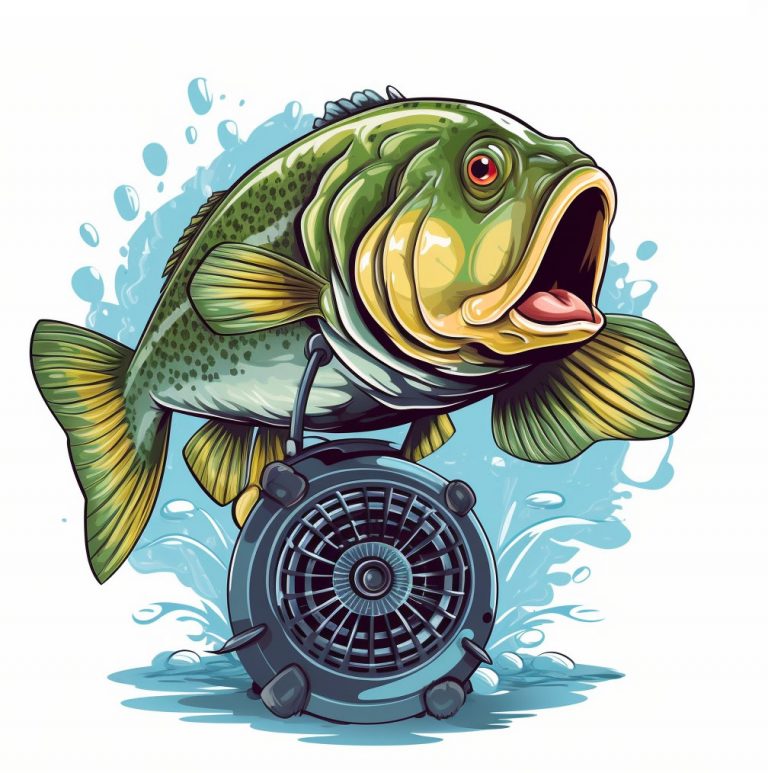
Why are bass hard to catch in the summer?
Summer bass fishing can be a challenging task for many anglers. Bass are known for their elusive and hard-to-catch nature, and summertime can make this even more difficult. There are several reasons why bass can be tough to catch during the summer months, and understanding these factors can improve your chances of success. In this […]
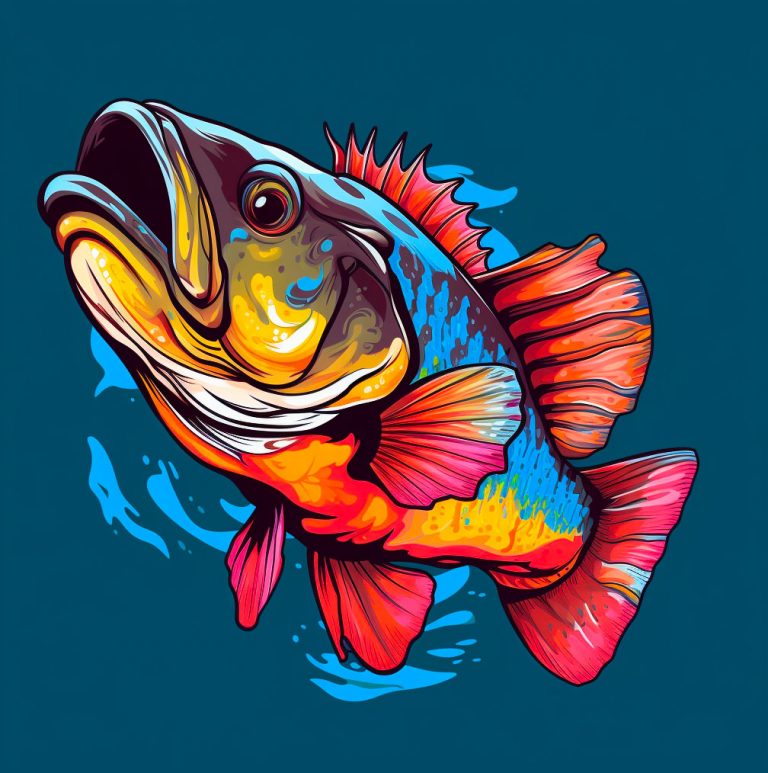
Best Lure Colors For Summer Bass
Summer is a great time for fishing, and it is a crucial time of the year to choose the correct lures for catching bass. Catching bass in summer can be a bit challenging as they tend to avoid the heat of the day and become more inactive. However, selecting the best lure colors can make […]

